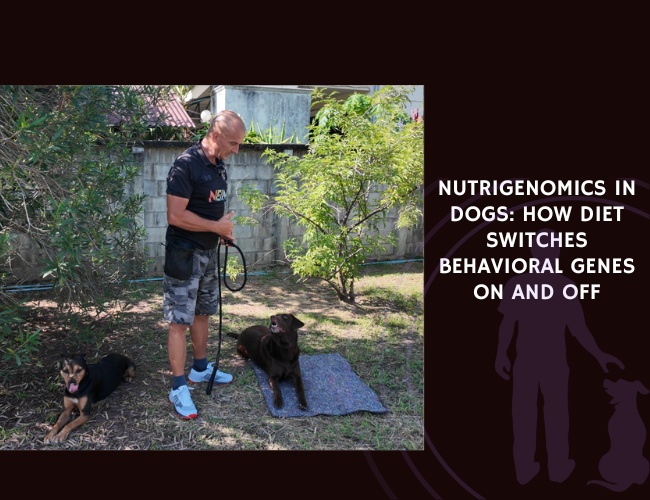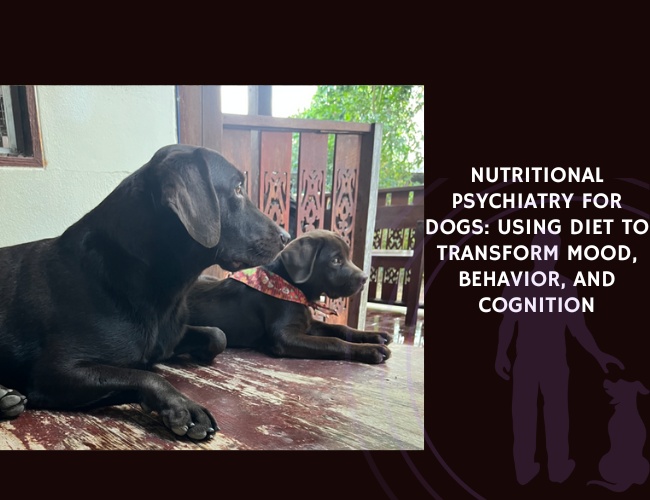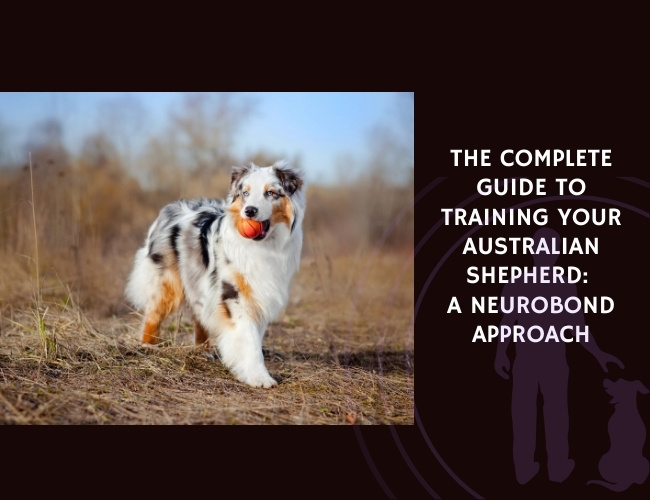Picture a cloud of white fur with a perpetual smile, dark eyes twinkling with mischief and warmth—this is the Samoyed, one of the world’s most beloved breeds. These magnificent Arctic dogs have journeyed from the frozen tundras of Siberia to become cherished family companions across the globe. Let us guide you through everything you need to know about these remarkable “Sammies,” from their fascinating history to their unique care requirements.
Character & Behavior: Understanding Your Samoyed’s Arctic Soul
History and Origin: From Siberian Tundras to Family Homes
The Samoyed’s story begins over 3,000 years ago with the Samoyede people of Siberia, from whom the breed takes its name. These nomadic reindeer herders developed a dog that could withstand temperatures plummeting to -60°F while maintaining the stamina to work tirelessly in harsh conditions. Unlike many working breeds developed for single purposes, Samoyeds were true multi-taskers—they herded reindeer, pulled sleds, hunted, and perhaps most importantly, kept their human families warm through brutal Arctic nights.
This intimate partnership shaped the breed’s character profoundly. Samoyeds slept inside the chooms (tents) with their families, often cuddling with children to provide warmth. This close contact over millennia created a dog with an unusually strong desire for human companionship—a trait that defines the breed today. When European explorers discovered these remarkable dogs in the late 1800s, they quickly recognized their value for polar expeditions. Dogs from these expeditions would later form the foundation of the Western Samoyed breeding programs.
The transition from working dog to companion animal happened gradually but naturally. Their stunning appearance, combined with their gentle temperament, made them instant favorites among dog enthusiasts. Queen Alexandra of England became an early champion of the breed, establishing kennels that would influence Samoyed breeding for generations. Today’s Samoyeds retain their working heritage in their sturdy build and endless energy, but they’ve adapted beautifully to life as family companions.
Temperament: The Smiling Dog’s Personality Decoded
The Famous Samoyed Smile That characteristic upturned mouth isn’t just adorable—it’s functional. The smile prevents drooling, which would freeze in Arctic conditions. But beyond its practical origins, this expression perfectly captures the Samoyed’s sunny disposition. These dogs approach life with infectious enthusiasm, greeting each day (and person) as if it’s the best thing that’s ever happened to them.
Social Intelligence Samoyeds possess remarkable emotional intelligence. They read human moods with uncanny accuracy and often adjust their behavior accordingly. Feeling down? Your Sammy might gently rest their head on your lap. Excited? They’ll match your energy with playful bounces and their distinctive “woo-woo” vocalizations. This sensitivity makes them excellent therapy dogs, though it also means they can become anxious in tense households.
The Independent Thinker Despite their people-pleasing nature, Samoyeds retain a streak of independence from their working heritage. They were bred to make decisions while herding or during long sled runs, and this translates to a dog that sometimes has their own ideas about obedience. You might notice your Samoyed pause to consider whether your command is really worth following—especially if something more interesting catches their attention. This isn’t defiance; it’s intelligent evaluation.
Pack Mentality Your Samoyed views your family as their pack, and they take their membership seriously. They want to be involved in everything, from morning coffee to evening TV time. This can manifest as:
- Following family members from room to room
- “Helping” with household tasks (often making them take twice as long)
- Positioning themselves where they can monitor all family members
- Becoming distressed when separated from their people
Socialization: Building a Confident Companion
Early socialization shapes your Samoyed’s adult personality more than perhaps any other factor. Between 3-14 weeks, puppies experience a critical socialization window where positive experiences create lasting impressions.
With Other Dogs Samoyeds generally excel in multi-dog households, drawing on their pack-oriented heritage. However, proper introductions matter:
- Start with controlled meetings in neutral territory
- Watch for play bows and relaxed body language
- Supervise early interactions, especially with size mismatches
- Remember that same-sex pairings may require more careful management
With People Your Samoyed should meet diverse people during puppyhood—different ages, ethnicities, and appearances. Make these encounters positive with treats and praise. Adult Samoyeds who missed early socialization can still learn, but progress requires patience and possibly professional guidance.
With Children Samoyeds typically adore children, but their size and enthusiasm can overwhelm small ones. Teach both dog and child appropriate interaction:
- No pulling fur or tails
- Gentle petting and calm voices
- Supervised play sessions
- Respect for the dog’s space during meals and rest
Exercise Needs: Channeling Arctic Energy
Your Samoyed’s ancestors could run 50-100 miles daily pulling sleds. While your companion Sammy doesn’t need quite that much exercise, they do require substantial physical and mental stimulation.
Daily Exercise Requirements
- Puppies (up to 12 months): 5 minutes per month of age, twice daily
- Adults (1-7 years): 60-90 minutes minimum, preferably split into two sessions
- Seniors (7+ years): 30-60 minutes, adjusted for health and mobility
Ideal Activities Beyond standard walks, Samoyeds thrive with varied exercise:
- Hiking: Their endurance makes them excellent trail companions
- Swimming: Many Sammies love water, though their coat requires thorough drying
- Sledding/Skijoring: Connects them to their heritage
- Agility: Combines physical and mental challenges
- Fetch variations: Add complexity with different toys or hiding spots
Mental Stimulation A tired Samoyed is a good Samoyed, but physical exhaustion alone won’t suffice. These intelligent dogs need mental challenges:
- Puzzle feeders for meals
- Hide-and-seek games with toys or treats
- Training sessions learning new tricks
- Nose work activities
- Interactive toys that dispense rewards
Grooming: Maintaining the Cloud
The Samoyed’s magnificent coat requires dedication, but the process can become a bonding ritual rather than a chore.
Understanding the Double Coat Samoyeds sport a weather-resistant double coat:
- Undercoat: Soft, dense, and insulating
- Outer coat: Longer, harsher guard hairs that repel moisture
- Seasonal shedding: Twice yearly “coat blowing” periods
Daily Maintenance
- Line brushing: Work through the coat in sections, brushing against the growth direction first, then smoothing
- Problem areas: Behind ears, armpits, and rear legs mat easily
- Tools needed: Slicker brush, metal comb, undercoat rake
The Shedding Reality Let’s be honest—Samoyed fur will become part of your life. During shedding season, you might collect enough fur to knit another dog. Many owners save this incredibly soft undercoat for spinning into yarn. Between major sheds, expect moderate daily fur loss. Strategies for managing the fluff include:
- Daily brushing sessions (10-15 minutes)
- Professional grooming every 6-8 weeks
- High-quality vacuum designed for pet hair
- Accepting that some fur on clothing is a fashion statement 🐾
Training & Education: Shaping Your Samoyed’s Mind
Training Methods: The Positive Approach
Samoyeds respond beautifully to positive reinforcement training. Their sensitive nature means harsh corrections can damage their trust and enthusiasm. Instead, focus on making training a game they want to win.
Key Training Principles
- Timing is everything: Mark desired behaviors within 3 seconds
- Consistency across family: Everyone uses the same commands
- Short, engaging sessions: 5-10 minutes maintains focus
- End on success: Always finish when your dog succeeds
Motivation Matters Different Samoyeds respond to different rewards:
- Food-motivated: Use tiny, high-value treats Size: 1gramm
- Social-Play-motivated: Incorporate favorite toys as rewards
- Praise-motivated: Enthusiastic verbal praise and petting
- Mixed approach: Combine methods for best results
Basic Obedience: Foundation Commands
Every Samoyed should master these essential commands for safety and harmony:
“Sit” – The Gateway Command Start here because it’s easy and builds confidence. Hold a treat close to your dog’s nose, move it slowly over their head. Their bottom naturally touches the ground. Say “sit” as it happens, then reward immediately.
“Stay” – Building Impulse Control Begin with your dog sitting. Hold your palm toward them, take one small step back. Count to two, then return and reward. Gradually increase distance and duration. Praise your dog with a treat if you return.
“Come” – The Recall Challenge Never call your Samoyed to come for something they view as negative. Make coming to you the best thing ever:
- Start in enclosed spaces
- Use excited whistle and body language
- Reward generously every time
- Practice daily under different circumstances, not just formal training
Advanced Training: Beyond the Basics
Once your Samoyed masters fundamentals, advanced training provides mental stimulation and strengthens your bond.
Agility Training Samoyeds excel at agility, combining their athleticism with problem-solving. Start with:
- Low jumps and tunnels
- Building confidence before speed
- Positive associations with equipment
- Gradual complexity increases
Sledding and Weight Pulling Connect with your Samoyed’s heritage through:
- Proper harness fitting (never attach to collar)
- Starting with empty sled or light weights
- Building endurance gradually
- Commands like “hike” (go), “gee” (right), “haw” (left)
Trick Training Samoyeds love showing off. Popular tricks include:
- Spin/twirl
- Play dead
- Speak/quiet
- Paw shake variations
- Weaving through legs
Socialization Training: Creating Confidence
Ongoing socialization throughout your Samoyed’s life prevents anxiety and reactivity.
Think of socialization as your Samoyed’s passport to navigating the modern world with confidence and grace. While their ancestors primarily interacted with their tight-knit nomadic families and other working dogs, today’s Samoyeds encounter a dizzying array of experiences—from bustling dog parks to noisy city streets, from Amazon delivery trucks to skateboarding teenagers. Without proper socialization, even the friendliest breed can develop fears or anxieties that limit their quality of life and strain your relationship.
The misconception that socialization ends after puppyhood costs many dogs their confidence. Just as you wouldn’t expect a child to navigate adulthood based solely on their kindergarten experiences, your Samoyed needs continued positive exposures throughout their life to maintain social skills. The world constantly changes—new neighbors move in, construction projects begin, novel technologies emerge. Your Samoyed’s ability to adapt depends on their foundational confidence combined with ongoing positive experiences.
What makes socialization particularly crucial for Samoyeds is their sensitive, people-oriented nature. These dogs read human emotions like open books and can absorb anxiety from their environment. A well-socialized Samoyed becomes a social butterfly who greets new experiences with curiosity rather than fear, turning potential stressors into adventures. They become the dogs who charm veterinary staff instead of cowering, who make friends at outdoor cafés, and who help other anxious dogs feel safe through their calm confidence.
Remember, socialization isn’t about overwhelming your dog with experiences—it’s about thoughtful, positive exposures that build resilience. Every successful interaction deposits confidence in your Samoyed’s emotional bank account, creating reserves they can draw upon when facing future challenges. Whether you’re starting with an eight-week-old puppy or helping an adult rescue overcome past limitations, the path to confidence remains the same: patience, positivity, and progressive challenges that honor your dog’s individual pace.
Puppy Socialization Classes Enroll between 8-16 weeks for:
- Controlled dog interactions
- Exposure to various stimuli
- Basic training foundation
- Owner education
Adult Socialization Missed early socialization? All isn’t lost:
- Start with calm, controlled environments
- Use distance to manage intensity
- Reward calm behavior around triggers
- Consider professional help for severe issues
Problem Behaviors: Common Challenges and Solutions
Excessive Barking Samoyeds are vocal dogs, but excessive barking needs addressing:
- Identify triggers (boredom, alerts, attention-seeking)
- Teach “quiet” command
- Provide adequate exercise and mental stimulation
- Never yell—it sounds like barking to them
Digging Their Arctic heritage includes digging cooling holes:
- Provide designated digging area
- Bury toys for treasure hunts
- Increase exercise if boredom-driven
- Supervise outdoor time initially
Destructive Chewing Especially common in understimulated Samoyeds:
- Puppy-proof thoroughly
- Provide appropriate chew toys
- Rotate toys to maintain novelty
- Increase physical and mental exercise
Separation Anxiety Their pack mentality can create distress when alone:
- Gradual desensitization to departures
- Create positive alone-time associations
- Consider daycare or dog walkers
- Never punish anxiety-driven behaviors

Nutritional Recommendations: Fueling Your Arctic Athlete
Picture your Samoyed’s ancestors surviving in one of Earth’s harshest environments, where every calorie mattered and nutritional efficiency meant the difference between thriving and merely surviving. These dogs evolved to extract maximum nutrition from whatever food sources the Samoyede people could share—fish from frozen rivers, reindeer meat, and even the occasional seal. This genetic heritage of efficient metabolism remains encoded in your modern Samoyed’s DNA, making their nutritional needs both simpler and more complex than you might expect.
Today’s Samoyeds might not be pulling sleds across frozen tundra, but their bodies still operate like those of elite athletes. Every meal fuels not just their physical energy but also maintains that glorious double coat, supports their active minds, and keeps their ever-present smile bright. The food choices you make ripple through every aspect of your dog’s health—from the spring in their step during morning walks to the shine in their coat that catches afternoon sunlight.
Yet here’s where many well-meaning owners stumble: they either overfeed their “starving” Sammy (those pleading eyes are Oscar-worthy performances) or choose foods based on marketing rather than nutritional science. Your Samoyed’s metabolism, refined by thousands of years of Arctic survival, can be remarkably efficient—meaning they might need less food than their size suggests, but that food needs to work harder. Understanding this balance between quantity and quality becomes your key to maintaining a healthy, energetic companion who ages gracefully.
The journey to optimal nutrition doesn’t require a degree in veterinary science, but it does demand becoming an educated consumer who can see past fancy packaging to evaluate what truly nourishes your Arctic athlete. From puppyhood through their senior years, your Samoyed’s dietary needs will evolve, but the foundation remains constant: quality ingredients that honor their heritage while supporting their modern lifestyle. Let’s explore how to make every meal count in ways your Sammy’s ancestors could only dream of.
Dietary Needs: Quality Matters
Your Samoyed’s diet directly impacts their health, energy, and that magnificent coat. These active dogs require nutrient-dense food that supports their metabolism without causing weight gain.
Choosing Quality Food Look for:
- First ingredient: Named meat (chicken, lamb, salmon)
- Protein content: 22-26% for adults, 28-32% for puppies
- Fat content: 12-15% for adults, 15-20% for puppies
- No fillers: Avoid corn, wheat, soy as primary ingredients
- AAFCO certification: Ensures complete nutrition
Special Considerations
- Grain-free debate: Consult your vet about DCM concerns
- Raw diets: Require careful planning and hygiene
- Home-cooked: Must be nutritionally balanced
- Allergies: Some Samoyeds develop food sensitivities
Feeding Schedule: Consistency is Key
Puppies (8 weeks – 12 months)
- 8-12 weeks: 4 meals daily
- 3-6 months: 3 meals daily
- 6-12 months: 2-3 meals daily
- Use puppy-specific formula
Adults (1-7 years)
- 2 meals daily, 12 hours apart
- Consistent timing aids digestion
- Adjust portions for activity level
- Monitor body condition score
Seniors (7+ years)
- May benefit from senior formula
- Consider smaller, more frequent meals
- Joint support supplements often helpful
- Regular weight monitoring crucial
Fluff. Fire. Loyalty.
Built for ice, born for hearts.
The Samoyed isn’t just a pretty face—it’s a working spirit wrapped in clouds. Bred to survive the Siberian tundra, they’ve traded sleds for sofas without losing their purpose. Behind the smile lies a legacy of loyalty, endurance, and the instinct to stay close.
Joy isn’t a trick. It’s their default.
That perpetual grin isn’t for show—it reflects a temperament forged in human warmth. Samoyeds aren’t obedient robots. They’re emotionally attuned, expressive, and wired for deep connection. They don’t just follow you—they feel you.
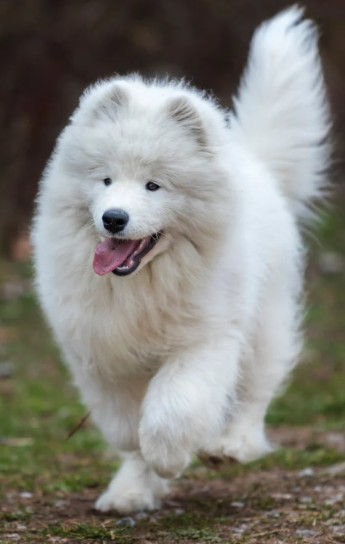
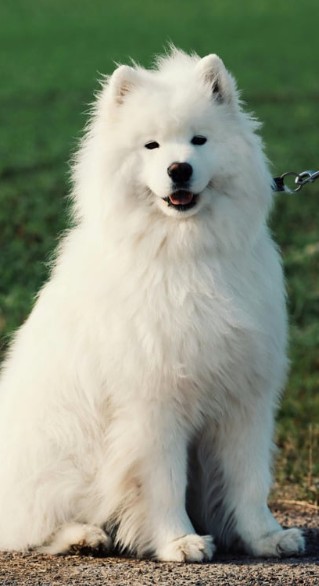
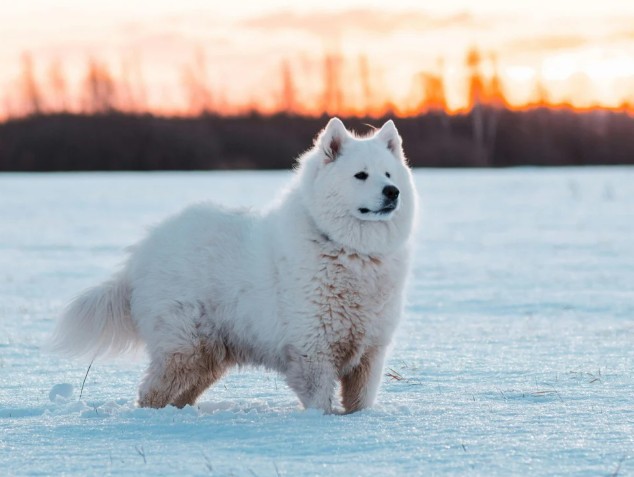
Respect the coat, honour the mind.
Caring for a Samoyed isn’t maintenance—it’s devotion. Their beauty demands work, and their brain demands partnership. Get both right, and you won’t just have a dog. You’ll have a companion who lives with you, not for you.
Supplements: Enhancing Health
While quality food provides most nutrients, certain supplements benefit Samoyeds:
The world of canine supplements can feel overwhelming—shelves lined with bottles promising everything from shinier coats to eternal youth. It’s tempting to think more is better, but when it comes to supplementing your Samoyed’s diet, strategic selection based on breed-specific needs yields the best results. Your Sammy’s magnificent coat, active lifestyle, and genetic predispositions create unique nutritional requirements that thoughtful supplementation can support.
Before diving into the supplement aisle, remember that these products work best as enhancements to, not replacements for, a balanced diet. Think of supplements as targeted support for your Samoyed’s potential weak points—those areas where genetics, age, or lifestyle create additional demands. Just as their Arctic ancestors received nutrients from diverse sources including fish, seal, and reindeer, your modern Samoyed might benefit from carefully chosen additions to their commercial diet.
The key is understanding which supplements offer real benefits versus marketing hype. Your veterinarian can help assess your individual dog’s needs based on age, activity level, and health status. What works wonders for your friend’s Samoyed might be unnecessary or even counterproductive for yours. Let’s explore the supplements that consistently show value for this breed, always keeping in mind that quality matters as much as choosing the right type.
While quality food provides most nutrients, certain supplements benefit Samoyeds:
Joint Support
- Glucosamine and chondroitin
- Start preventatively around age 4
- Especially important for active dogs
- MSM for additional support
Omega-3 Fatty Acids
- Supports coat health and shine
- Anti-inflammatory properties
- Fish oil or algae-based options
- Follow dosing guidelines carefully
Probiotics
- Digestive health support
- Immune system benefits
- Especially helpful during stress
- Choose dog-specific formulas
Water Intake: Hydration Essentials
Samoyeds need constant access to fresh water:
- Change water at least twice daily
- More during shedding season
- Consider filtered water in hard-water areas
- Monitor intake—changes may indicate health issues
Exercise and Water
- Bring water on long walks
- Avoid large amounts immediately after exercise
- Ice cubes make fun summer treats
- Watch for excessive drinking (could indicate diabetes)
Weight Management: Maintaining Ideal Condition
Samoyeds can gain weight easily, especially if exercise decreases:
Ideal Body Condition
- Ribs felt but not seen
- Visible waist from above
- Abdomen tucks up from side
- Energy for daily activities
Weight Management Strategies
- Measure food precisely
- Account for training treats
- Increase exercise gradually
- Consider lower-calorie foods
- Regular weigh-ins
Treating Responsibly
- Treats maximum 10% daily calories
- Use vegetables like carrots
- Break commercial treats smaller
- Training rewards need not be large
Diseases & Susceptibilities: Protecting Your Samoyed’s Health
Common Health Problems: What to Watch For
Your Samoyed’s brilliant smile and boundless energy might make them seem invincible, but like all purebred dogs, they carry genetic predispositions that require your vigilant attention. Understanding these potential health challenges isn’t meant to alarm you—it’s about empowering you to provide the best possible care for your fluffy companion. The good news? Samoyeds are generally robust dogs with a life expectancy of 12-14 years, and many live even longer with proper care.
The breed’s isolation in Siberia for thousands of years created a relatively healthy genetic foundation, but it also meant that when certain health issues did arise, they became concentrated within the bloodlines. Modern breeding practices have made tremendous strides in identifying and reducing these concerns, but knowledge remains your most powerful tool in ensuring your Samoyed lives a long, comfortable life.
Think of this section as your health roadmap—a guide that helps you recognize early warning signs, understand what’s normal versus concerning, and know when to seek veterinary guidance. Remember, early detection often makes the difference between a minor manageable condition and a serious health crisis. Your Samoyed can’t tell you when something feels off, but armed with this knowledge, you’ll become fluent in reading the subtle signals they do provide.
While generally healthy, Samoyeds face certain breed-specific challenges:
Hip Dysplasia This inherited condition affects the hip joint formation:
- Symptoms: Lameness, difficulty rising, bunny-hopping gait
- Prevention: Buy from breeders who test parent dogs
- Management: Weight control, appropriate exercise, supplements
- Treatment: Ranges from conservative management to surgery
Progressive Retinal Atrophy (PRA) Genetic eye condition leading to blindness:
- Early signs: Night blindness, dilated pupils
- Progression: Gradual vision loss over months/years
- Testing: DNA test available
- Adaptation: Most dogs adjust well to blindness
Autoimmune Conditions Samoyeds show higher incidence of:
- Hypothyroidism: Low thyroid hormone production
- Diabetes: Requires insulin management
- Sebaceous adenitis: Skin condition affecting coat
- Regular screening: Blood work can catch early
Samoyed Hereditary Glomerulopathy Serious kidney disease affecting males more severely:
- Symptoms: Excessive thirst, urination, weight loss
- Onset: Usually by 15 months in males
- Testing: Genetic test available
- Management: Specialized diet, medications
Genetic Testing: Knowledge is Power
Responsible breeders test for:
- Hip and elbow dysplasia (OFA or PennHIP)
- Eye conditions (CERF exam)
- PRA genetic status
- Hereditary glomerulopathy
- Cardiac evaluation
Understanding Results
- Clear/Normal: No genetic markers
- Carrier: Won’t develop but can pass on
- Affected: Will develop condition
- Request documentation before purchasing
Preventative Care: Staying Ahead
Vaccination Protocol Core vaccines include:
- DHPP (Distemper, Hepatitis, Parvovirus, Parainfluenza)
- Rabies
- Consider lifestyle vaccines (Lyme, Bordetella)
- Follow veterinary guidelines for boosters
Parasite Prevention
- Monthly heartworm prevention
- Flea and tick control
- Regular fecal testing
- Environmental management
Dental Health Samoyeds need dental attention:
- Daily brushing ideal
- Dental chews help
- Professional cleanings
- Monitor for gum disease
Early Detection: Know the Signs
Watch for subtle changes:
- Appetite fluctuations
- Energy level changes
- Unusual thirst or urination
- Coat quality deterioration
- Behavioral changes
Regular Veterinary Visits
- Puppies: Every 3-4 weeks until 16 weeks
- Adults: Annual wellness exams
- Seniors: Biannual check-ups
- Blood work helps catch issues early
Breed-Specific Considerations
Heat Sensitivity Despite Arctic origins, Samoyeds can overheat:
- Never shave the coat—it provides insulation
- Provide shade and water
- Exercise during cooler hours
- Watch for panting, drooling
- Know heatstroke signs
Bloat Risk While not highest risk, precautions help:
- Feed multiple small meals
- Avoid exercise near meals
- Elevated feeders controversial
- Know emergency symptoms

Attitude & Lifestyle: Living with Your Samoyed
Living Environment: Creating the Perfect Home
Living with a Samoyed means inviting a piece of the Arctic wilderness into your home—complete with all the joy, energy, and yes, fur that entails. These magnificent dogs don’t just occupy space in your house; they transform it into their kingdom, where every corner becomes a potential napping spot, every visitor becomes a new best friend, and every day becomes an adventure worth celebrating with their signature “woo-woo” songs.
Understanding how to create a harmonious living environment with your Samoyed goes far beyond providing food and shelter. These dogs were bred to be integral members of their human families, sharing not just working duties but living spaces, warmth, and companionship. In the Siberian chooms, Samoyeds weren’t relegated to outdoor kennels—they were trusted bedmates, babysitters, and heating sources all rolled into one fluffy package. This heritage means your modern Samoyed expects nothing less than full family membership, complete with voting rights on household decisions (they usually vote for more treats and longer walks).
Your lifestyle will undoubtedly change when a Samoyed enters it—but in the most delightful ways. You’ll find yourself planning vacations around dog-friendly destinations, adjusting your wardrobe to complement white fur, and discovering that your idea of a perfect evening involves a content Sammy snoring at your feet. You might notice your stress levels dropping as you bury your fingers in that therapeutic coat, or find yourself laughing more as your Samoyed performs their daily comedy routine.
This section will help you navigate the practical realities of Samoyed ownership while maintaining your sanity and sense of humor. Because let’s be honest—you’re not just adapting your lifestyle to accommodate a dog. You’re learning to coexist with a furry force of nature who has opinions about everything from your choice of vacuum cleaner to the optimal temperature for afternoon naps. The key to success? Embracing the chaos while establishing routines that work for both species in your pack.
Samoyeds adapt to various living situations, but certain environments suit them better:
Space Requirements While apartment living is possible, consider:
- Need for daily extended exercise
- Vocal nature may disturb neighbors
- Shedding in confined spaces
- Ideally, secure yard access
Indoor Living Your Samoyed wants to be where you are:
- Dog beds in main living areas
- Climate control important
- Non-slip flooring helpful
- Designated grooming space
Outdoor Access
- Secure fencing (minimum 5-6 feet)
- Shade requirements
- Digging prevention strategies
- Never leave unsupervised for extended periods
Climate Considerations: From Arctic to Anywhere
Cold Weather Champion Samoyeds thrive in cold:
- Can handle extreme cold when acclimated
- Love playing in snow
- May resist coming inside
- Still need shelter access
Warm Weather Adaptations With care, Samoyeds manage heat:
- Exercise during dawn/dusk
- Always provide water
- Air conditioning helpful
- Never shave—coat insulates against heat too
- Cooling mats for comfort
Seasonal Adjustments
- Spring/Fall: Major shedding periods
- Summer: Increased grooming needs
- Winter: May need paw protection from salt
- Year-round: Consistent care requirements
Family Life: The Perfect Family Dog?
With Children Samoyeds often excel in families:
- Patient and gentle nature
- Sturdy enough for play
- Protective without aggression
- Teach mutual respect
Multi-Pet Households Generally peaceful with:
- Other dogs (especially opposite sex)
- Cats (when raised together)
- Smaller pets need supervision
- Proper introductions essential
Working Families Consider if away 8+ hours:
- Doggie daycare options
- Midday walker necessary
- Companion pet helpful
- Mental stimulation crucial
Senior Samoyeds: Golden Years Care
The day will come when you notice your perpetual puppy moving a bit slower on morning walks, perhaps taking an extra moment to rise from their favorite sleeping spot, or choosing a sunny patch for a nap over another round of fetch. These subtle changes mark your Samoyed’s transition into their senior years—a phase that brings its own unique rewards and responsibilities. While it might tug at your heartstrings to see silver creeping into that already-white muzzle, remember that senior Samoyeds often display a special kind of magic that only comes with age.
Your senior Samoyed has spent years perfecting the art of being your companion. They know your moods, your routines, and exactly how to make you smile on difficult days. Now it’s your turn to return that devotion by adapting to their changing needs. The good news? Samoyeds often age gracefully, maintaining their cheerful disposition and love of life well into their golden years. Many owners report that their senior Sammies develop an even deeper emotional connection, as if they understand that every moment together becomes increasingly precious.
This life stage isn’t about decline—it’s about adaptation and celebration. Your senior Samoyed might not be able to hike ten miles anymore, but they’ll still greet you with enthusiasm (even if it takes them a moment longer to get to the door). They might sleep more, but when awake, that trademark Sammy smile still lights up the room. The key is recognizing that aging is not a disease but a natural process that, with proper support, can be comfortable and dignified.
Think of yourself as your Samoyed’s personal concierge for comfort. Your role evolves from playmate and trainer to caregiver and comfort provider, ensuring their senior years are filled with love, appropriate activity, and the medical support they need. This transition requires patience, observation, and sometimes difficult decisions, but the reward—sharing these precious twilight years with your loyal companion—makes every adjustment worthwhile. After all, they’ve given you their best years; now you have the privilege of making their final years their best yet. 🧡
As your Samoyed ages, needs change:
Physical Adjustments
- Orthopedic bedding
- Ramps for cars/furniture
- Non-slip surfaces
- Easier grooming positions
Exercise Modifications
- Shorter, more frequent walks
- Swimming for low-impact exercise
- Mental games replace physical
- Watch for fatigue signs
Health Monitoring
- Biannual vet visits
- Blood work screening
- Weight monitoring crucial
- Pain management discussions
Quality of Life Senior Samoyeds often remain playful:
- Adjust expectations, not affection
- Maintain routines
- Comfort over perfection
- Cherish every moment 🧡
Finding a Samoyed: Your Journey Begins
The decision is made—you’re ready to welcome a Samoyed into your life. But finding the right Samoyed isn’t as simple as responding to the first “puppies available” ad you see online. This journey requires patience, research, and sometimes a bit of detective work to ensure you’re bringing home a healthy, well-socialized companion who will share your life for the next dozen years or more. Whether you’re drawn to a bouncing puppy or considering rescuing an adult dog, the path to finding your perfect Sammy starts with knowing where to look and what questions to ask.
Reputable Breeders Look for:
- Health testing documentation
- Allow facility visits
- Ask questions about your lifestyle
- Lifetime support offered
- Samoyed Club of America members
Red Flags Avoid breeders who:
- Won’t show parents
- Have multiple litters available
- No health guarantees
- Push for immediate decisions
- Ship without meeting you
Rescue Options Consider adoption through:
- Breed-specific rescues
- Local Samoyed clubs
- General shelters (rare but possible)
- Foster-to-adopt programs
Preparation Checklist Before bringing home your Samoyed:
- Puppy-proof thoroughly
- Stock grooming supplies
- Find veterinarian
- Arrange initial training
- Prepare family members
Conclusion: Is a Samoyed Right for You?
The Samoyed offers unmatched companionship wrapped in a stunning white coat. These dogs bring joy, laughter, and yes, fur into their families’ lives. They’re not the right fit for everyone—their exercise needs, grooming requirements, and desire for constant companionship demand dedication.
But for those who can meet their needs, Samoyeds reward with unwavering loyalty, endless entertainment, and that famous smile that brightens even the darkest days. They’re more than pets; they’re family members who happen to shed.
Ask yourself honestly:
- Can I commit to daily grooming?
- Will I provide adequate exercise regardless of weather?
- Am I prepared for a vocal, attention-seeking companion?
- Can I afford quality food, regular grooming, and veterinary care?
- Will someone be home regularly to prevent loneliness?
If you answered yes, your life is about to become much fluffier and infinitely more joyful. The Samoyed’s combination of beauty, brains, and benevolence creates a companion like no other. From their Arctic heritage to their modern role as beloved family members, these remarkable dogs continue to capture hearts worldwide.
Welcome to the wonderful world of Samoyed ownership—where every day brings smiles, every season brings fur, and every moment brings the incomparable joy of sharing your life with one of nature’s most magnificent creatures. Your Samoyed is waiting to share their boundless love, infectious enthusiasm, and yes, their spectacular coat with you. The adventure of a lifetime awaits! 🐾


